The city is slowly building a huge park atop towering mounds of garbage that from 1948 to 2001 constituted Fresh Kills Landfill. Over those years, Staten Islanders watched five malodorous hills rising along the Fresh Kills Estuary in the western part of the island, the trash arriving truckload by truckload from around the city. Now, perhaps in partial recompense, they will have Freshkills Park, a hilly 2,200-acre grassland on which to pasture their sheep.
As of this writing, only a few hints around the edges are open to the public. But the visible trash and the stink have disappeared, along with the space between the words and the capital K. A Freshkills Alliance is active. And when the Parks Department announced a Discovery Day in September for visitors to get an advance look at some of the interior, a Park Odyssey trip to the island was clearly in order.
The weather was in good order too. In fact, we couldn't have ordered a nicer day.
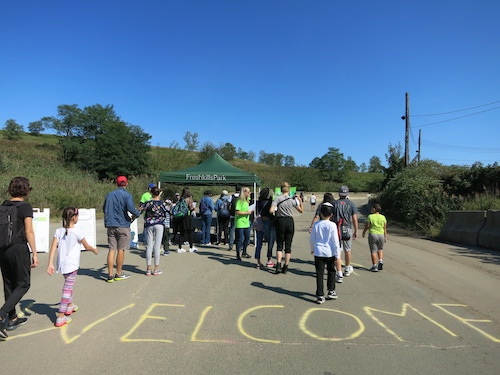
Gravel roads traverse the mounds. A many-layered barrier consisting of everything from soil to plastic sheeting separates your feet from the 150 million tons of trash beneath. Still, monitoring pipes and gas wellheads protrude from the depths, reminding you of what you're standing on.
The wooden sticks bound to the pipes are to give birds safe perches, as, always wanting a good view, they had taken to alighting atop the hot pipes and burning their feathers.
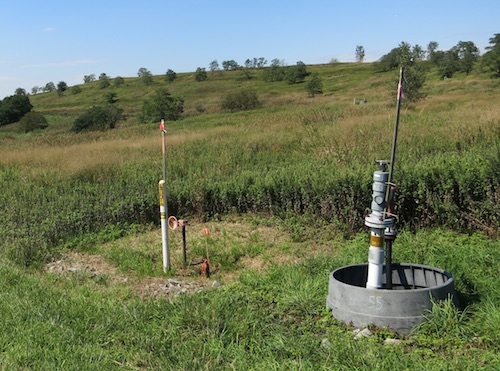
Every so often you'll come upon a burn-off station. The methane generated by the underground waste is piped to processing plants for distribution to home gas lines. But in the event a processing plant goes offline, the gas is burned off at these stations to prevent buildup. I'd kind of like to see such a burn-off.
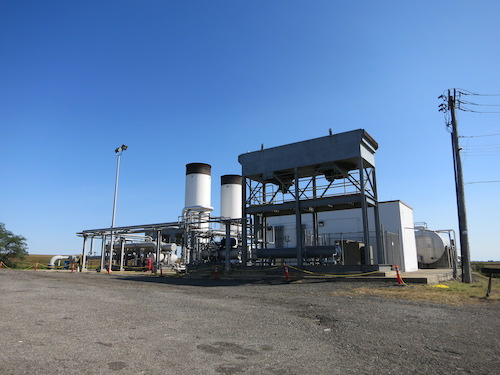
The name "Fresh Kills" has nothing to do with anything being freshly killed, pace the turkey vultures that swoop patiently overhead. Many of the waters in Dutch-settled New York and environs are called "kill" after an Dutch word for stream or channel. The freshwater estuary here has carried the name "Fresh Kills" since at least 1750. And, thankfully, the channels themselves have not been destroyed; the trash mounds were raised between them. Kayakers rejoice!
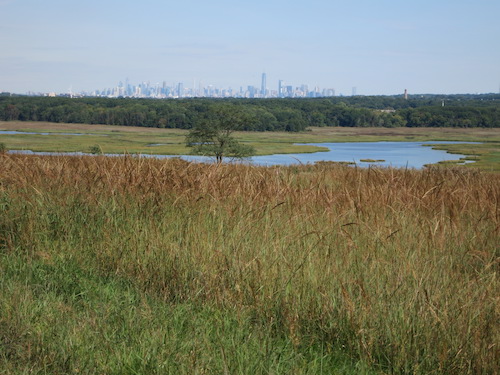
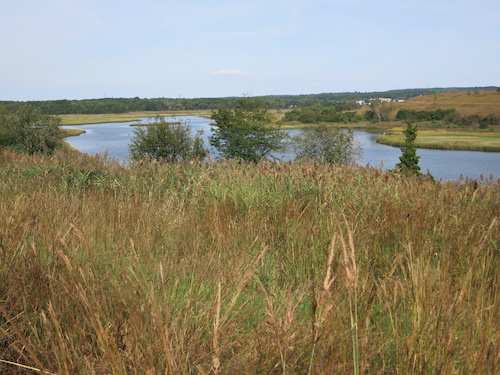
A modest hike up one of the mounds took us to a summit where Parks Department folks were ready with hay bales to sit on and activities for the hyperactive (drawing, kite flying). They were also anxious to talk up the looming future of this soon-to-be great park.
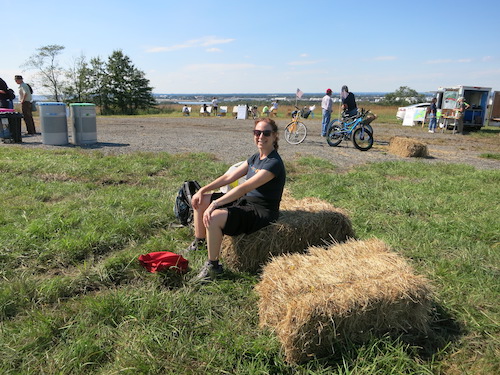
Deer have been spotted in the park. And the raptors above told us small game hid in the grass and trees. But all the wildlife we saw was the winged kind.

None of the park's cottonwoods and locust trees were planted by humans. Birds dropped seeds and nature took its course.
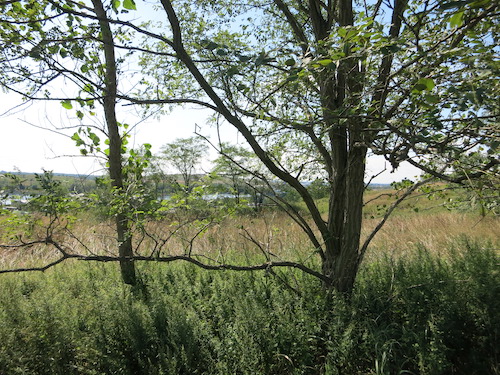
After exploring on our own, we joined an Audubon walk to seek out some of those birds.

We saw quite a few species - raptors, songbirds, waterfowl – but all too fast or far away to photograph. (Take my word for it, the white splotches in the photo below are egrets.) The joy was in the very act of traipsing along the transformed trash dump, amid low trees and wetlands, experiencing nature and the open air.
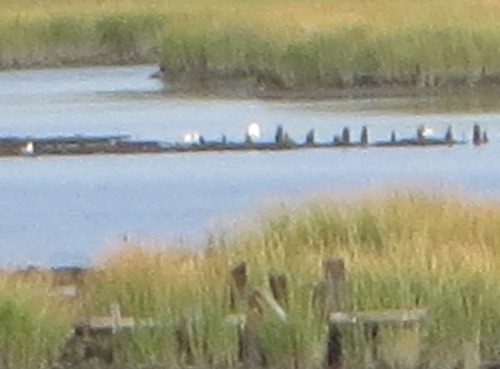
So when will Freshkills Park open to the public for real? The Alliance expects it to happen in stages from 2020 to 2036. Subscribe to the Alliance newsletter for alerts. I expect there will be more Discovery Days to come.
All photos © Jon Sobel, Critical Lens Media
No comments:
Post a Comment